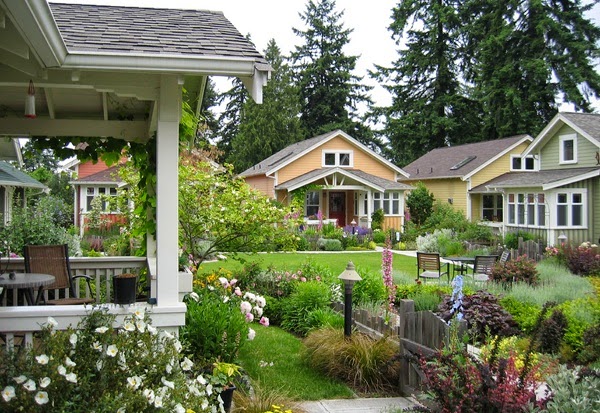You’re there in front of your Facebook page and want to show your friends something interesting that considers: a link, a photo, a thought. The operation is simple: too lightly, you can click on “Share”. The involvement is minimal: if interests change the “Delete” button is now available. The virtual world is therefore a shared world, where every idea can be put in common: you can also share living spaces? Of course with the Co-housing.

It is residential communities where the benefits that arise from living in a small village, are associated with the autonomy of private homes. You feel part of an aggregation and, while maintaining their independence, they share some spaces in a social, but also savings. The building design is “participated” in a style that is hierarchical: each can make proposals that are evaluated and voted on. The size of public and private a house come together with the intent to reduce waste, buy goods and services in a collective manner, feel less vulnerable because they belong to a community in which each has its own role and contributes to the welfare of all.
In real terms this is a thirty housing units reserved for families or singles who share the essential services such as laboratories for DIY, nests for children, gathering places for the elderly, guest rooms, gardens or car … The design of the space is then made in a Community perspective in which even the renovations and maintenance are shared.
The first examples of Co-housing can be found in Scandinavia as early as the 60s, other current examples are those of Japan, USA, Canada, Australia, Holland and England. Italy is no exception. In Milan, a few steps from the Polytechnic, in a former factory for two years there is a Cohousing with the following shared spaces: a beautiful garden, a swimming pool, a gas, a laundry and ironing service. Of these services benefit from thirty families who live in lofts and attics private.

In the most general sense also the modern Social housing, living social, that is, forms of housing in the cities to think about those who are unable to buy a property or to incur the cost of a rental, but at the same time have incomes too high to access the rankings of public housing, may be an example of Cohousing. The new housing, built in a social context of shared services are carried out with the principles of green building and on environmentally friendly.
In the coming days, also in Milan, will open the project called “Elements of Change”: an area of 17,000 square meters, designed by the ‘Florentine architect Fabrizio Rossi Prosi, with 124 apartments of energy class. The common areas are numerous and architectural elements such as balconies, decks, stairways and hallways are designed to foster relationships of the small community.

0 comments:
Post a Comment